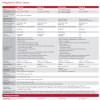I guess purpose is to do it - and if a disk dies, you can still get your data. If they had os on it - one would go to recovery mode / installation fdisk and bring the dynamic disk online. (one may have to repair mbr/boot whatever)What is this video about then? What is the purpose of such mirror?
I thought it will work just fine with one disk out and all I need is to insert new disk, go to "Disk manager" and run some command to "restore"?
Typically there's software (like MegaRAID) with any raid controller that gives you insights and ability to manage raid.Then how do I manage mirror? What if this controller gives up? Can I move disk to SATA port and boot from it? I mean, is it just hard bitwise copy controller?
You would see single VD drive. DiskInfo won't work - but some tooling that is capable of communicating with raid controller is able to get you that data. Typically you will have access to all data info from your raid's management software like MegaRAID; you will see their state, and so on.Also, how will it be presented to Windows? As single drive? will I see all drives in utilities like DiskInfo?
AND.. What tool would I use to monitor this mirror?
Do not mistake, this will be hardware accelerated raid - its not software like dynamic disk from windows.
Note: This is just a stock photo from google

Yes.EDIT: Is this correct cable for my backplane? I have 8 disk bay empty/disconnected. Can I just get 2 of those cables, connect to LSI card and have all 8 disks working?
Yes.EDIT2: And then again, it says "HOST BUS Type: PCIe"
And I wonder if this card will be hosting bootable drives??
Can't comment on that, most often its always much better solution to use pcie card rather than use motherboard provided controllers. They are always "crappier". I would always use lsi card rather than use built in sata/sas slots.What about this? For the same money I can just replace MB and it will work with all my stuff for sure..













